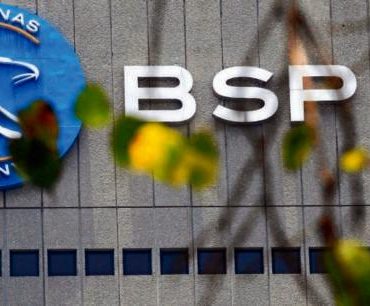Will the PSEi finally topple 7,000?

The Philippine stock market continued to move higher last week following a strong performance in August. Now that the Philippine Stock Exchange Index (PSEi) is trading close to the 7,000 level again, everyone is wondering whether the stock market will finally break out.
Unfortunately, the odds are currently still not in favor of that, at least not right away.
There are numerous factors that could prevent the PSEi from going up sustainably in the short term. One of the most important factors is the rebound of the US dollar as the potential Fed rate cut is largely priced in.
After falling to a low of 100.552 from its recent peak of 106.257 in April, the US dollar index is bouncing back and is now trading at 101.177.
If the dollar continues to strengthen, the peso is expected to depreciate, which historically has not been good for the stock market.
Recall that the main catalyst for the strong performance of the local market since July was growing confidence that the Fed would start to pivot or cut rates in September. Expectations that interest rates would go down were largely responsible for the weakening of the US dollar and the strengthening peso, which drove foreign investors into buying emerging market stocks, including Philippine stocks.
Note that since July, total net foreign buying at the local market reached P12.4 billion. This is a reversal of the net outflow seen during the second quarter of the year. The return of foreign investors is largely responsible for the 8.2-percent increase in the PSEi since the end of June.
During the same period, the dollar weakened by 4.5 percent while the peso appreciated by 4.7 percent.
Although lower interest rates are good for stocks, the potential rate cut is already factored in. According to the CME Group, the probability of a rate cut in September is now 100 percent, up from only 53 percent as of end May. In fact, the probability of a more aggressive 50-basis point reduction has been increasing and is now at 41 percent. As such, it won’t be surprising if investors “sell on news” when the Fed cuts rates on Sept. 18.
Another factor that could hurt Philippine stocks’ ability to rebound is the poor performance of the US market.
US stocks fell last week, with the S&P 500 and Nasdaq declining by 4.3 percent and 4.7 percent, respectively. The main catalyst was the sell-off of chip makers that have gone up sharply since 2023 because of the artificial intelligence boom. Shares of Nvidia, AMD and Micron were down 13.9 percent, 9.6 percent and 10.2 percent, respectively, during the period in review.
If the weakness of the US market continues, the performance of global stocks, including Philippine stocks, could be negatively affected.
Finally, September is a seasonally weak month for stocks. From 2015 to 2023, the PSEi fell by an average of 2.2 percent and closed lower 70 percent of the time.
Nevertheless, even if the PSEi fails to break above 7,000, investors should not be discouraged. Given the country’s improving fundamental outlook brought about by falling inflation and interest rates, the market should inevitably go up over the longer term. As such, a possible correction in the short term should be viewed as an opportunity to accumulate stocks at cheaper prices.


















